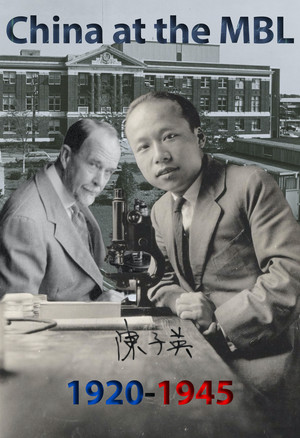- John Philip Trinkaus
- Early Life
- Trink’s Undergraduate Research at Wesleyan University
- Trink's First Visit to the MBL
- Trink and the MBL Embryology Course
- Trink's Graduate Research at Johns Hopkins University
- New Location & New Research Problem
- Fundulus as Choice Organism
- Trink's work on the Yolk Syncytial Layer (YSL) in Fundulus Epiboly
- Trink’s MBL Research on Cell Motility with C. A. Tickle
- Conclusion
- Alfred Huettner
- Cathy Norton
- China at the MBL: 1920-1945
- Collecting at the MBL
- Cyclins at the MBL
- Edmund Beecher Wilson
- Edwin Grant Conklin
- Envisioning the MBL: Whitman’s Efforts to Create an Independent Institution
- Eugene Bell Center for Regenerative Biology and Tissue Engineering 2010-2018
- Shinya Inoué: Capturing Dynamic Cellular Processes
- Squids, Axons, and Action Potentials: Stories of Neurobiological Discovery
- The Biological Bulletin
- The Ecosystems Center (1975-2018)
- The MBL Embryology Course 1939
- The Marine Biological Laboratory
- The Neurobiology of Vision at the MBL
- Using Biodiversity
- Collecting Methods & Surveys
- “Report upon the Invertebrate Animals of Vineyard Sound and Adjacent Waters, with an account of the Physical Features of the Reg
- “A Biological Survey of the Waters of Woods Hole and Vicinity. Part III. A Catalogue of the Marine Fauna” (1913)
- Methods for Obtaining and Handling Marine Eggs and Embryos (1957)
- Experiments
- Supply & Sale
- Collecting Methods & Surveys
- Viktor Hamburger and Experimental Embryology
- Visual Media in Embryology
- Woods Hole 150
The 1920s was a turbulent time in Chinese political and cultural history. Government instability and corruption, war, and sweeping poverty defined the period. These factors influenced many Chinese students as they came to the U.S. to study biology. Two of Morgan’s students, Lu Huilin (1900-1997) and Pan Guangdan (潘光旦; 1899-1967) became major advocates for Chinese eugenics. Pan visited the MBL in 1925. Lu visited in 1926, and came back in 1927 and 1928. Both also spent time at Cold Spring Harbor Laboratory, and Pan participated in the eugenics course there.
Back in China, Lu published a Chinese translation of Morgan’s The Theory of the Gene and eventually established the first Chinese sperm bank for eugenic purposes in the 1980s. Pan, on the other hand, using novels, essays, and genealogical studies, published extensively on eugenic topics and became the most influential thinker about Chinese eugenics in the twentieth century.

